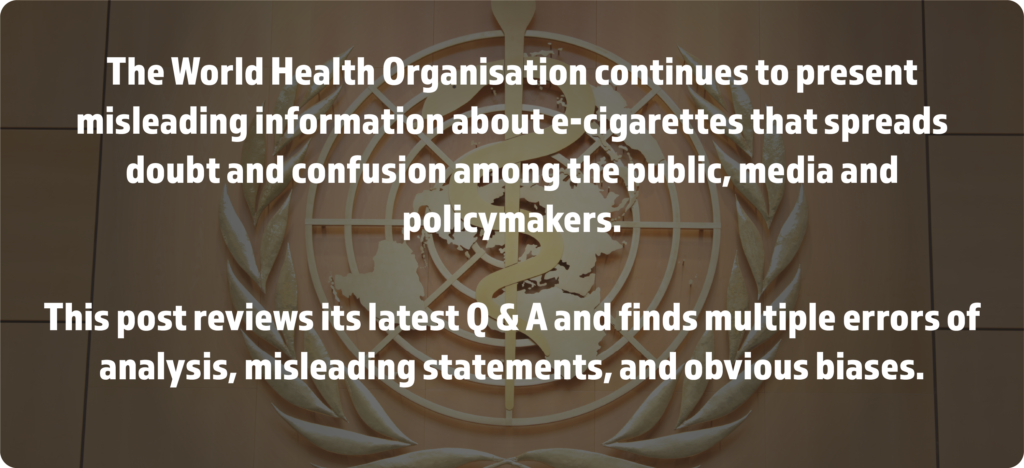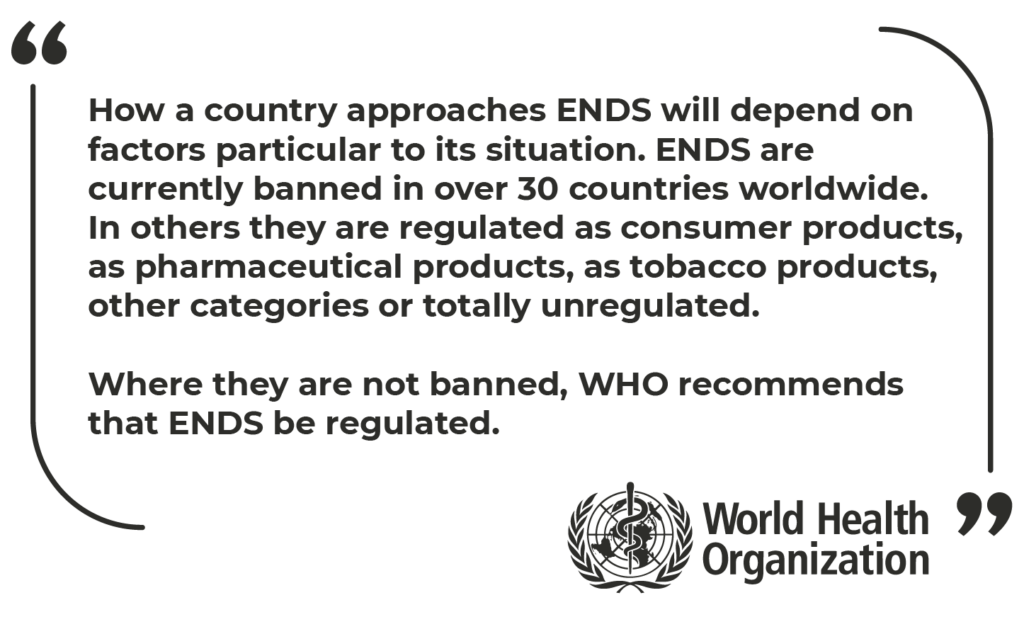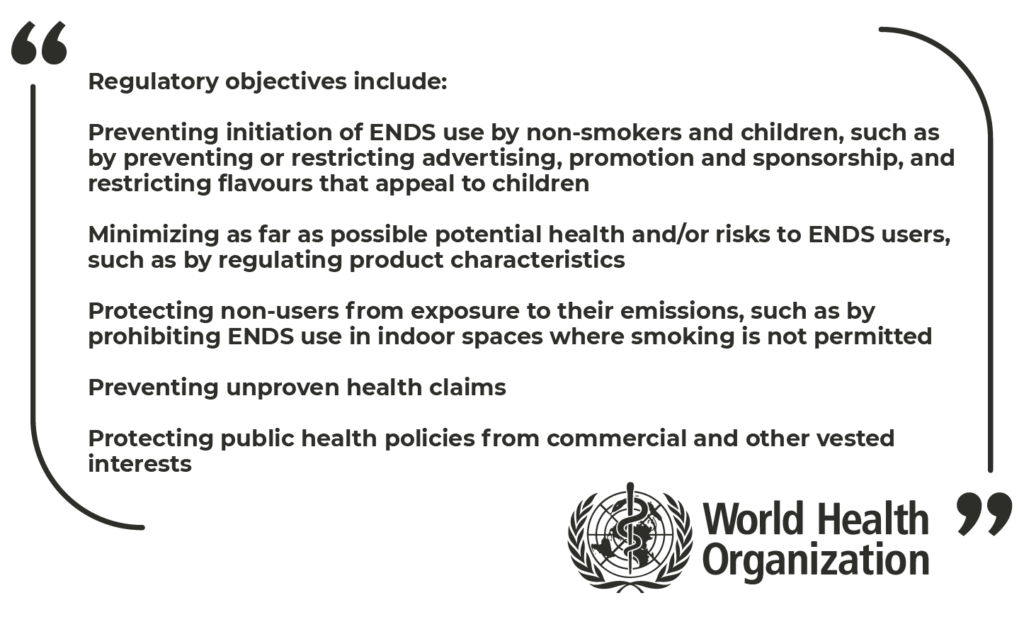Republished from Clivebates.com with the consent of the author

WHO leads with outright prohibition as its preferred policy, though it has never bothered to justify this with reference to intended and unintended consequences or the rights of smokers to access lower risk products. Almost everything else it proposes functions as a de facto protection of the cigarette trade.

WHO starts with an anchoring bias: that the normal policy response should be the prohibition of ENDS. There is no scientific or ethical basis for this policy. Why would it make sense to ban the much safer nicotine product, deliberately deny law-abiding smokers better options, protect the cigarette trade from competition, stimulate unregulated black markets in vaping products, and draw young people into the illicit supply chain, and therefore into criminal networks?
WHO has never assessed the costs and risks of ENDS prohibition, but relentlessly promotes it all the same. I have written about WHO’s strong support of vaping prohibition here: Prohibitionists at work: how the WHO damages public health through hostility to tobacco harm reduction.
The arguments against prohibition are well put in this document by the consumers’ organisation INNCO: 10 reasons why blanket bans of e-cigarettes and HTPs in low- and middle-income countries (LMICs) are not fit for purpose.

10 reasons why blanket bans of e-cigarettes and HTPs in low- and middle-income countries (LMICs) are not fit for purpose, March 20

WHO fails to grasp trade-offs and unintended consequences in policymaking. There is nothing in this regulatory package that shows that WHO has grasped the basics of policymaking in this area. The critical policy insight is that excessive regulation of vaping products functions as a barrier to entry and protection of the more dangerous cigarette products. The Royal College of Physicians (London) expressed this well in its 2016 report, Nicotine with smoke: tobacco harm reduction:

Nicotine without smoke: tobacco harm reduction 28 April 2016
There are other trade-offs: the protection of young people from relatively minor risks (e.g. experimental vaping) could have the effect of imposing major risks on adults (continued smoking or relapse from vaping to smoking). A further complication is that for some adolescents, vaping will function as a diversion from smoking. For these young people, the teenagers most at risk, vaping creates a significant health benefit.
Written by Clive Bates



